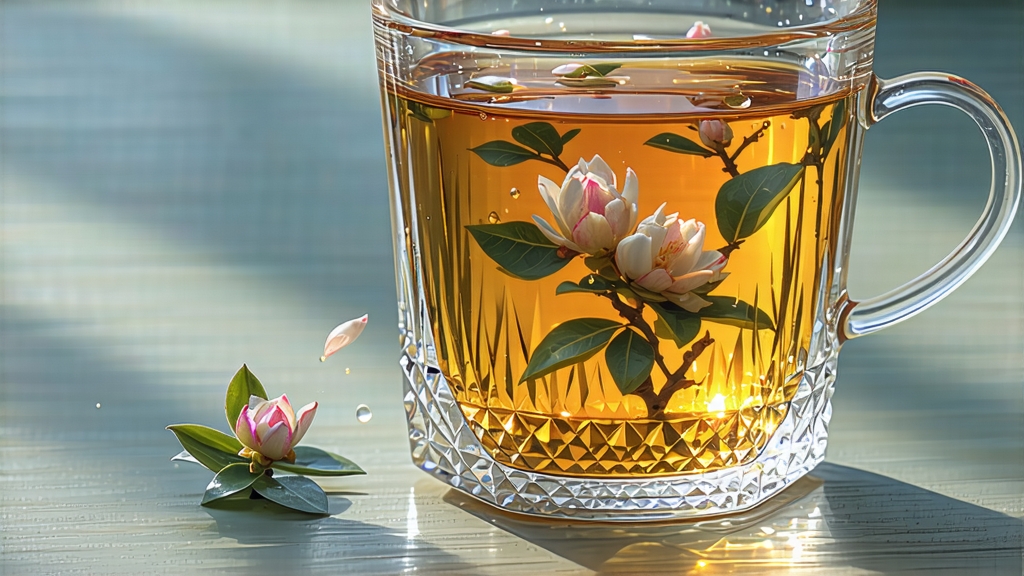
If green tea is the youthful scholar of Chinese tea culture—bright, brisk, and assertive—then white tea is the recluse poet who prefers to watch the world from a shaded veranda. Among white teas, none embodies this retiring grace more perfectly than Fuding Silver Needle (Bai Hao Yin Zhen), a tea so understated that its very subtlety has become its loudest statement. Harvested only for a few fleeting days each spring, Silver Needle is composed entirely of unopened buds still wearing their silvery down like night frost. One sip and the modern palate is startled by a flavor that seems almost absent—until, moments later, it blooms into a lingering cool sweetness that feels like breathing after a summer storm.
Historical whispers place the birth of white tea in the Song dynasty (960-1279), when imperial tribute lists first recorded “white down” being sent from the north of Fujian. Yet the Silver Needle we recognize today did not take shape until the late Qing, when improved withering techniques allowed the buds to retain their pale color while developing deeper aromatics. Fuding county—its granite hills, red soils, and maritime fogs—proved uniquely suited to the tea’s need for slow, even dehydration. Local lore claims that the first buds are plucked when the morning dew still carries the salt of the East China Sea, a romantic notion that nevertheless hints at the microclimate’s importance: cool nights slow oxidation, while gentle sea breezes prevent the grassy bite that can mar inland white teas.
Botanically, only two cultivars are sanctioned for authentic Fuding Silver Needle: Fuding Da Bai and Fuding Da Hao, both selected over centuries for their oversized buds and thick trichome layers. The picking window opens when the buds reach 2.5–3 cm yet remain unopened, a stage locals call “fish-hook” because the tip curves like an angler’s lure. Experienced pickers can gather barely one kilogram of fresh buds in a day; five kilograms are required to yield a single kilogram of finished tea, making Silver Needle the most labor-intensive Chinese tea by weight.
Processing is disarmingly simple—no frying, rolling, or roasting—yet unforgivingly precise. After picking, the buds are spread on bamboo trays no thicker than one finger’s width and left to wither for thirty-six to forty-eight hours. The art lies in reading the weather: on humid days the trays may be slid into a loft heated only by residual warmth from a wood-fired drying room; on arid afternoons reed mats are draped overhead to filter harsh sunlight. Throughout, handlers turn the buds every hour to ensure even moisture loss, relying on touch rather than instruments. A bud that bends without snapping is ready for the final low-temperature bake, a fifteen-minute encounter with 40 °C air that halts oxidation while preserving enzymes responsible for the tea’s famed aging potential. Properly made Silver Needle feels feather-light yet springs back when pressed, its surface dusted with what Chinese merchants poetically call “silver essence.”
Western drinkers often treat white tea as green tea’s delicate cousin, then ruin it with boiling water and three-minute infusions. Silver Needle tolerates heat better than most whites, but it rewards restraint. The classic gongfu approach uses 4 grams of buds in a 150 ml porcelain gaiwan, water at 85 °C, and an initial flash rinse that is discarded not for cleanliness but to awaken the dormant aroma. The first formal infusion lasts twenty seconds; subsequent steeps add five. Liquor the color of pale chardonnay releases fragrances that migrate from wet stone and fresh alfalfa to honeydew and, in older vintages, the faint medicinal note of Chinese almond tofu. Because the buds are intact, they sink slowly; watching them drift like bioluminescent plankton is half the pleasure. Western-style teapots work if leaf-to-water ratios are halved and infusions kept under two minutes, yet the gaiwan remains the best lens for observing the tea’s slow metamorphosis.
Tasting Silver needle is an exercise in delayed gratification. The entry is almost hollow—texturally akin to chilled mineral water—then a cool effervescence creeps across the tongue, culminating in a throaty sweetness the Chinese call huigan, literally “returning sweetness.” Professional cuppers look for three benchmarks: clarity (the liquor must sparkle), persistence (sweetness should linger five minutes), and body (a sensation Chinese texts describe as “light yet not thin”). Age adds complexity; after five years of dry storage the tea develops